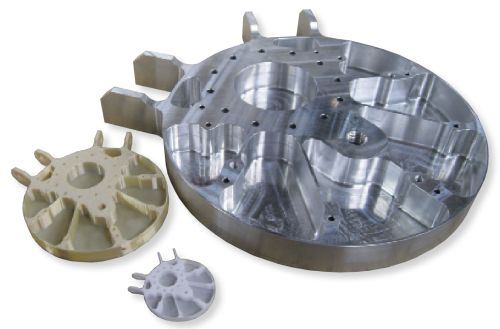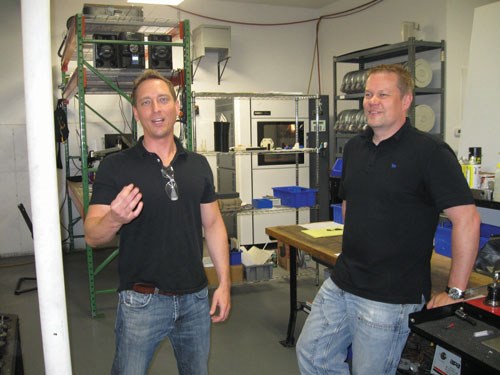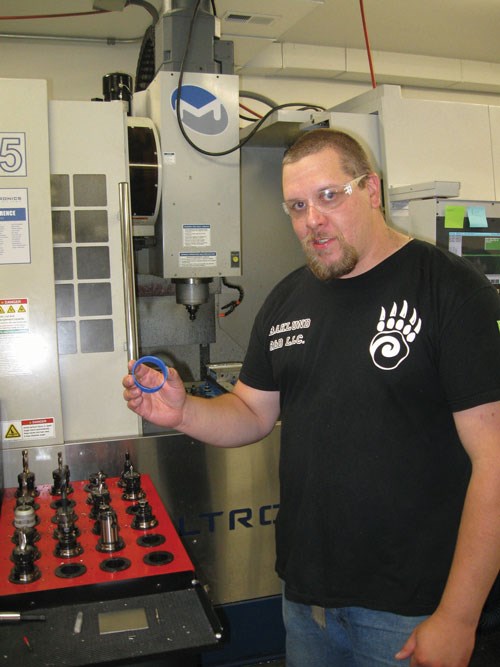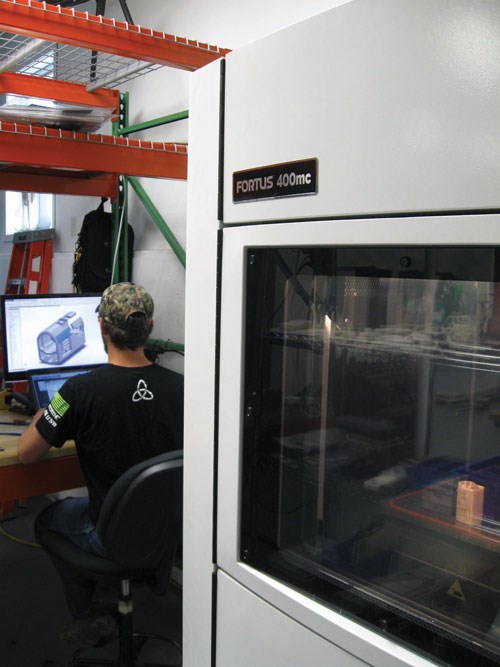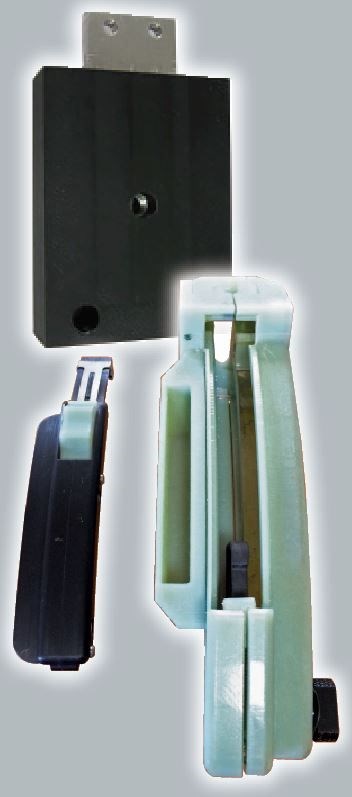Where 3D Printing Fits In
Baklund R&D, a tool and die and CNC machining job shop in Hutchinson, Minnesota, has an unusual philosophy for how to cultivate, encourage and develop manufacturing employees.
Baklund R&D, a tool and die and CNC machining job shop in Hutchinson, Minnesota, has an unusual philosophy for how to cultivate, encourage and develop manufacturing employees. Additive manufacturing fits into this philosophy.
The shop has an equally unusual approach to finding customers and winning their business. Additive manufacturing fits into this philosophy as well.
Over a year ago, I wrote about this shop’s early experiences with additive manufacturing after owner Jon Baklund decided to add a production-oriented Fortus 3D printer. That machine now operates on this company’s shop floor, just a few paces away from horizontal and vertical machining centers.
But I wanted to revisit this shop because there is also a larger story to tell here—one that involves additive manufacturing, but also touches on other ways that manufacturing is changing. Mr. Baklund is trying to build a manufacturing business on a set of assumptions and practices that are different from those of other shops.
Manufacturing is something he has always known. He learned it from his father, Dale Baklund, a 50-year career toolmaker and engineer who now plays a vital role of both trainer and senior toolmaker within his son’s 14-employee shop. For Jon, however, various pursuits outside of manufacturing—including motocross racing and 25 years as a martial arts instructor—have taught additional lessons that he sees as also being relevant to a manufacturing business. If there is one combination of values that now defines how Mr. Baklund guides his shop, it consists of (A) a belief in the potential of the individual to grow, improve and achieve, combined with (B) an appreciation for the power of mutually helpful relationships built on trust.
That formula may sound hopeful or hazy, but at Baklund R&D, it plays out in tangible ways.
To be sure, the shop is still small and working to grow. It is too soon to say how far it will go or how important these values will be to its ultimate success. In general, though, it is fair to say that modern manufacturing work is increasingly characterized by small teams of people managing broad ranges of operations, and also characterized by a need to adapt quickly to changing methodologies and abrupt, short-lead-time changes in customer demand. Key manufacturing employees are becoming scarcer and more valuable, and manufacturing customer expectations are becoming more demanding. Thus, in the values that Mr. Baklund is following and in the early successes his shop is seeing, he might be charting a course that will model some of the ways that manufacturing enterprises of the future will increasingly operate.
What follows is a sketch of the Baklund R&D approach as it relates to both employees and customers. In both areas, one striking detail is the extent to which 3D printing figures in.
The Team
Among the team members working on the shop floor at Baklund R&D, half of them had previous CNC machining experience and half came to the company without any such background. The expectation is that everyone, at every experience level, will find his own way to help others on the team succeed. A daily morning meeting on the shop floor aims to facilitate this. During this meeting, each employee is expected to describe his plans for the workday, with particular focus on problems he is facing in the parts he is working on or causes he sees for concern. A rule of the meeting is that no one is criticized or penalized for problems, or even for failure. The expected response from other staff members is to look for ways they can contribute to the solution or find capacity within their own workday to pitch in and help.
All of the staff members enjoy unusual fringe benefits for working here. Attention to health, wellness and outlook are a daily part of the shop’s habits and culture. Lunch and snacks are freely provided. Mr. Baklund and his wife Tara (the shop’s administrative assistant) are self-described “foodies”—both of them knowledgeable and enthusiastic about nutrition, and committed to providing healthy food for all of the staff every day, often prepared by Mrs. Baklund herself. Mr. Baklund says this commitment is as much of an investment as a perk, because of the effect it has on employee output. With good nutrition, he says attendance improves (the shop has reduced the incidence of sick days), and so does employee performance in the afternoon. Given the amount of value that each employee is expected to deliver each day, safeguarding that value by making it easy for employees to eat well is a logical step for the company to take, he says. The employee who has to dash to a fast food restaurant for lunch is likely to be sluggish throughout the afternoon.
Food for the mind is provided as well. Each month, Mr. Baklund chooses a book related to wellness, attitude or success, and purchases copies for everyone in the shop. Once per month, all of the staff retreats to an offsite conference room to discuss the book. Works by Dale Carnegie, for example, have been read and discussed this way. This practice—the book club as a routine part of a machine shop’s procedures—might seem bizarre, but it has proven invaluable for facilitating the kind of teamwork cited above. Employees who are all reading and discussing the same book are also exploring some of the same ideas, and developing a shared perspective and even a shared language of ideas for communicating with one another.
In fact, employees bring their own input into the mix of shared ideas. At the daily shop meeting, employees are asked to find inspiring or instructional quotes to share with the group. Sometimes, in situations of friction or disagreement between team members, sharing a quote relevant to the situation offers a way to step outside the immediate context of the problem to look at the issue from a broader vantage.
Employees are also expected to innovate, and here is where the 3D printer has proven invaluable. For this small shop to win business, says Mr. Baklund, it needs to be able to respond effectively to sudden, urgent needs from customers. That generally means being available to deliver short-run prototypes, which in turn generally means being prepared to complete or improve upon the design of parts that are as yet only conceptual and not yet refined for manufacturability. Aiding customers’ design efforts in this way is such a frequent part of the business that Mr. Baklund can’t do all of this engineering work on his own. Accordingly, he expects employees to grow not only in their skills at machining but in their skills at design, and in fact he expects them to see little distinction between these two realms. To that end, he encourages them to play with the 3D printer.
Indeed, another perk of being employed by Baklund R&D is this: Employees are free to use the shop’s 3D printing capabilities for their own purposes, freely making and taking any object they want to produce. If the 3D printer happens to be open, and if the employee has available time because his jobs are running on other machines and no one else needs help, then he is free to make personal use of the 3D printer even during working hours. This kind of learning through playing is difficult to allow on a machining center, in which programming is complex and tooling is expensive. But on a 3D printer making plastic parts, even a higher-end 3D printer, the use of the machine is straightforward enough and the material is inexpensive enough that encouraging employees to grow by exploring it is a natural secondary use of the machine’s capacity.
The Customers
Andy Bleck, the company’s VP of business development, manages three other representatives focused on finding business for the shop. Their activity is tracked as closely as any shopfloor operation, and it is even displayed with other business metrics on the shop floor. However, the metric by which this work is evaluated is not what you might think.
Mr. Baklund does not grade the business development reps’ efforts according to sales in dollars. Because these reps work in a sales capacity, he says they initially expected to be graded this way—to such a degree that it took him over a year to get them to stop evaluating themselves on the money they bring in. Looking for dollars is counter-productive, he says, because narrowly aiming to fill whatever machine capacity the shop happens to have open for sale creates an adversarial relationship. It forces his business development rep into the role of pest or bully, someone only trying to press a short-term interest. To prevent this, Mr. Baklund scores his reps’ success on how many live contacts they make with prospects. That’s it.
The contact does not have to go anywhere for it to be counted a success. This is because the rep cannot control whether any particular contact happens to generate business. What he can control is whether Baklund R&D makes and maintains a positive impression. Therefore, the impression is the goal. The reps reach out to new contacts only to learn about the contacts’ business, and only to ask whether Baklund R&D can be of help. That’s all. Because a certain percentage of positive relationships will sooner or later turn into business, the theory is that building enough positive relationships will provide a way for the shop to obtain the business it seeks without having to scrape for work, and without having to inflict encounters onto people that they do not welcome.
Mr. Bleck says additive manufacturing is tremendously effective at advancing these relationships, because having this capability in a machine shop is still so distinctive. He goes on prospecting calls with 3D-printed sample parts in hand. Prospects who later do not remember his name or his company’s name will nevertheless recall him when he reminds them that he is “the 3D printing guy.” It’s often the case that the contact had kept the 3D-printed part on his desk since the day of receiving it. In fact, the 3D-printed part sometimes gets through when nothing else will. Business cards or brochures left for a busy contact are often ignored, says Mr. Bleck, but the sample part gets a different reception. He can tell the contact’s receptionist, “I just wanted to leave this part for him that was made through 3D printing.” This is generally met with interest, and the part is passed along.
Medical device companies in particular often note that the shop has this capability. Minnesota has many such companies, and it is not uncommon for one of them to call Baklund R&D out of the blue a year or more after Mr. Bleck or another rep first made contact. When such a company calls, it is because of an urgent need, and Baklund R&D tries to be ready. By running the 3D printer through the night, often it can produce a short run of functional parts for delivery to the customer the next day. In one case, a medical device company called after 5:00 p.m. needing parts by 8:00 a.m. the next day. Demands such as this can’t always be satisfied, says Mr. Baklund—the quality of the available CAD model is a factor—but in this case his shop was able to deliver those parts by the early deadline. He says that when the company satisfies a new customer’s short-run needs through 3D printing in this way, the success leads to CNC machining work 90 percent of the time.
It even leads to work outside of CNC machining and outside of the shop’s capabilities. Again, Mr. Baklund asks his business development reps not to scrounge for machining work—not to be that self-interested or narrowly focused—but instead to reach out to find companies involved in manufacturing that are interested in building a relationship. As a result, on various occasions, Baklund R&D has outsourced molding, high-volume machining, welding and additive manufacturing for metal parts—all operations the shop is not equipped to do on its own. It has done this because sometimes it is the relationship alone that accounts for the business, not the shop’s capabilities. That is, customers sometimes appreciate the relationship with Baklund R&D to such an extent, and trust in this company’s care and knowledge far enough, that they are willing to pay a small markup to allow the shop to oversee the needed manufacturing no matter what the manufacturing process happens to be. Leading with 3D printing thus opens doors for Baklund R&D, including some doors that challenge the shop to reimagine the role it can play.
Related Content
8 Cool Parts From RAPID+TCT 2022: The Cool Parts Show #46
AM parts for applications from automotive to aircraft to furniture, in materials including ceramic, foam, metal and copper-coated polymer.
Read More3D Printing with Plastic Pellets – What You Need to Know
A few 3D printers today are capable of working directly with resin pellets for feedstock. That brings extreme flexibility in material options, but also requires greater knowledge of how to best process any given resin. Here’s how FGF machine maker JuggerBot 3D addresses both the printing technology and the process know-how.
Read MoreWhat Does Additive Manufacturing Readiness Look Like?
The promise of distributed manufacturing is alluring, but to get there AM first needs to master scale production. GKN Additive’s Michigan facility illustrates what the journey might look like.
Read MoreLarge-Format “Cold” 3D Printing With Polypropylene and Polyethylene
Israeli startup Largix has developed a production solution that can 3D print PP and PE without melting them. Its first test? Custom tanks for chemical storage.
Read MoreRead Next
Hybrid Additive Manufacturing Machine Tools Continue to Make Gains (Includes Video)
The hybrid machine tool is an idea that continues to advance. Two important developments of recent years expand the possibilities for this platform.
Read MoreAt General Atomics, Do Unmanned Aerial Systems Reveal the Future of Aircraft Manufacturing?
The maker of the Predator and SkyGuardian remote aircraft can implement additive manufacturing more rapidly and widely than the makers of other types of planes. The role of 3D printing in current and future UAS components hints at how far AM can go to save cost and time in aircraft production and design.
Read More3D Printing Brings Sustainability, Accessibility to Glass Manufacturing
Australian startup Maple Glass Printing has developed a process for extruding glass into artwork, lab implements and architectural elements. Along the way, the company has also found more efficient ways of recycling this material.
Read More
.jpg;width=70;height=70;mode=crop)
